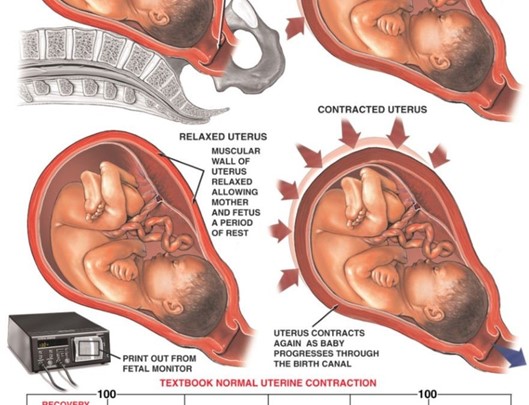The nurse assesses the initial lochia post-delivery which is known as:
Rubra.
Fontanalis.
Serosa.
Alba.
The Correct Answer is A
The initial lochia post-delivery is known as lochia rubra.
Lochia is the vaginal discharge that occurs after childbirth and consists of blood, mucus, uterine tissue, and other materials from the uterus.
There are three stages of lochia: lochia rubra, lochia serosa, and lochia alba.
Lochia rubra is dark or bright red in color and lasts for about three to four days after delivery.
Choice B is not an answer because Fontanalis is not a term related to lochia.
Choice C is not an answer because lochia serosa is the second stage of lochia and occurs after lochia rubra.
Choice D is not an answer because lochia alba is the last stage of lochia and occurs after lochia serosa.
Nursing Test Bank
Naxlex Comprehensive Predictor Exams
Related Questions
Correct Answer is B
Explanation
The nurse should instruct the parents to bring the infant’s favorite blanket to the hospital.
This can provide comfort and a sense of familiarity for the infant during their hospital stay.
Choice A is incorrect because reading a story about hospitalization to an 8- month-old infant may not be developmentally appropriate.
Choice C is incorrect because parents are usually allowed to stay with their infant during hospitalization.
Choice D is incorrect because manipulating the infant’s bedtime based on the hospital’s visiting hours is not necessary.
Correct Answer is A
Explanation

This is a sign of uterine hyperstimulation, which can cause fetal distress and excessive bleeding12.
The nurse should report this finding to the provider and monitor the fetal heart rate and maternal vital signs.
Choice B.
Early decelerations in the FHR are incorrect, as this is a normal finding during the second stage of labor, indicating head compression.
Choice C.
Pelvic pressure with contractions is incorrect, as this is an expected finding during the second stage of labor, indicating that the baby is descending through the birth canal.
Choice D.
Bloody show from the vagina is incorrect, as this is also an expected finding during the second stage of labor, indicating cervical dilation and effacement13.
Therefore, choice A is the best answer.
Whether you are a student looking to ace your exams or a practicing nurse seeking to enhance your expertise , our nursing education contents will empower you with the confidence and competence to make a difference in the lives of patients and become a respected leader in the healthcare field.
Visit Naxlex, invest in your future and unlock endless possibilities with our unparalleled nursing education contents today
Report Wrong Answer on the Current Question
Do you disagree with the answer? If yes, what is your expected answer? Explain.
Kindly be descriptive with the issue you are facing.
